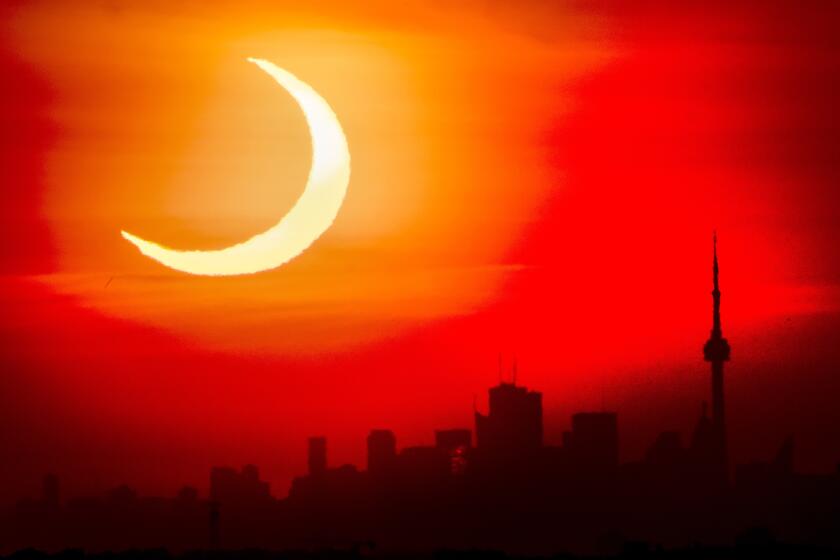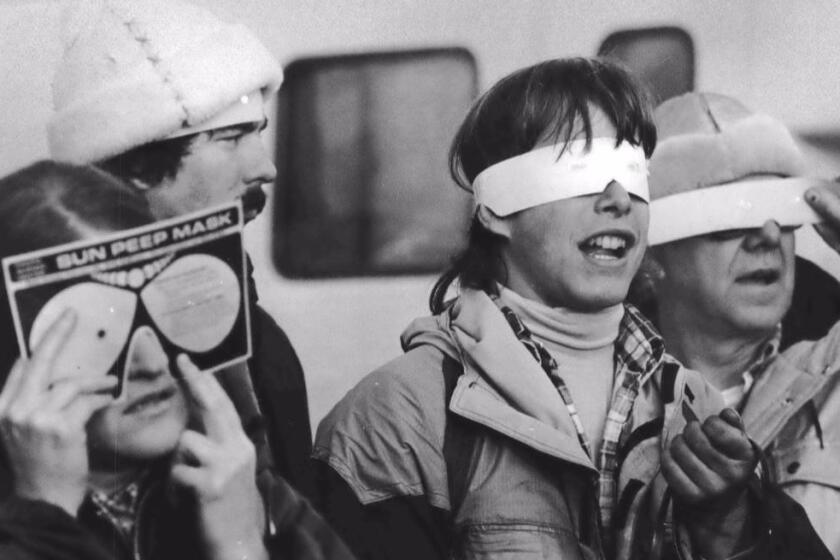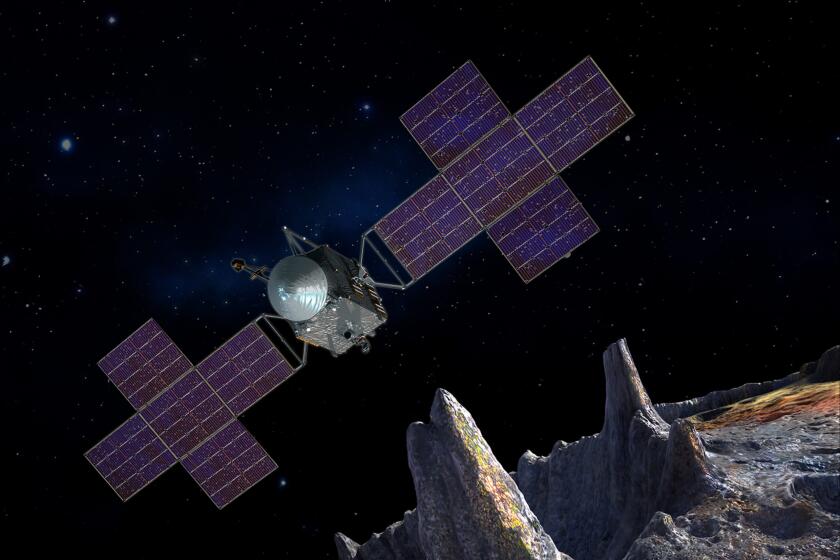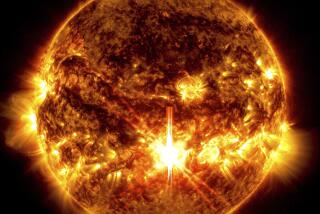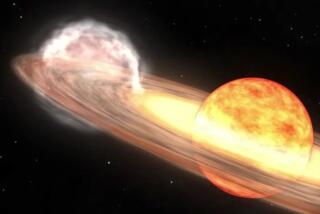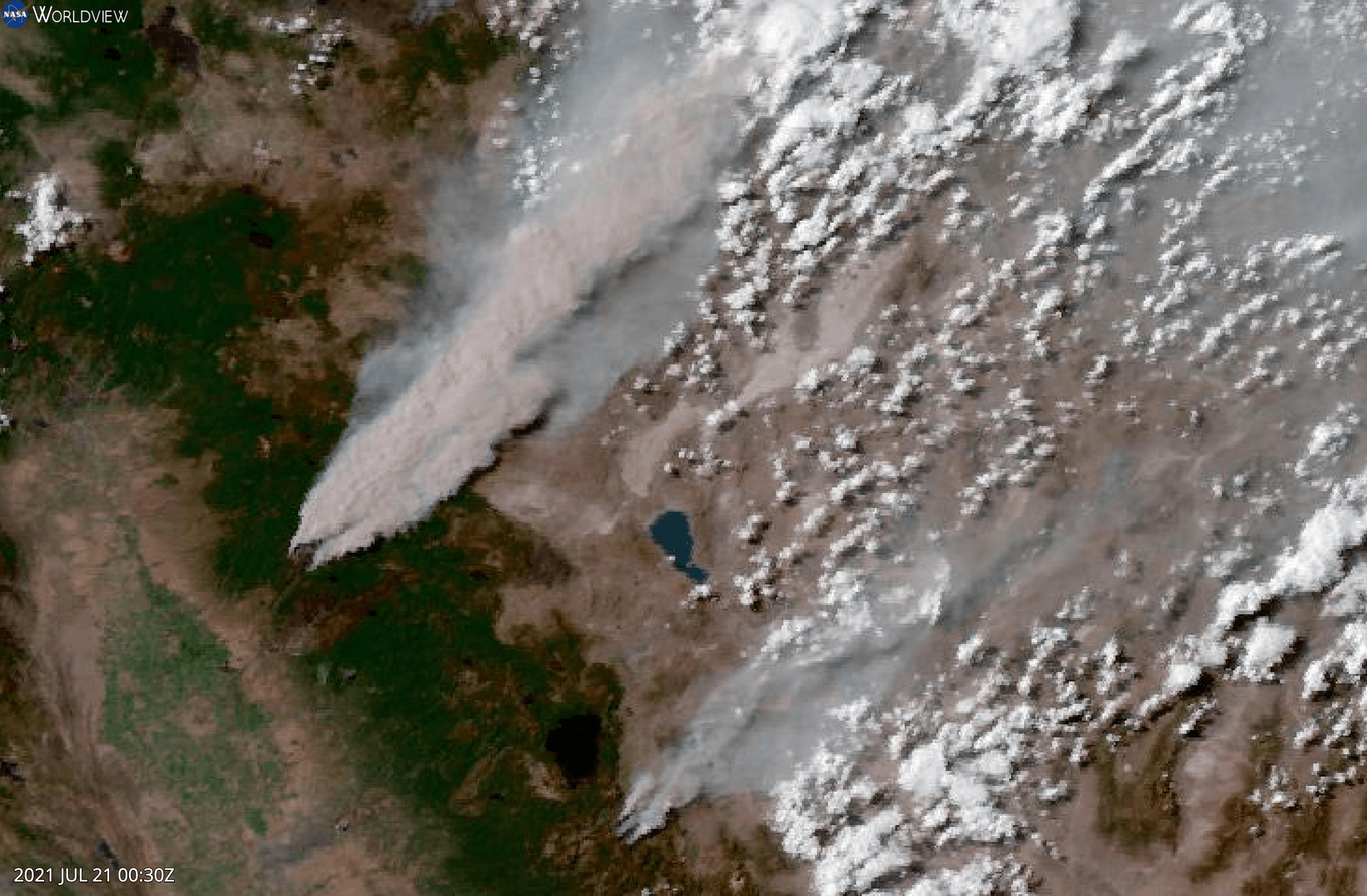A ‘ring of fire’ solar eclipse is coming Saturday. Here’s what you should know
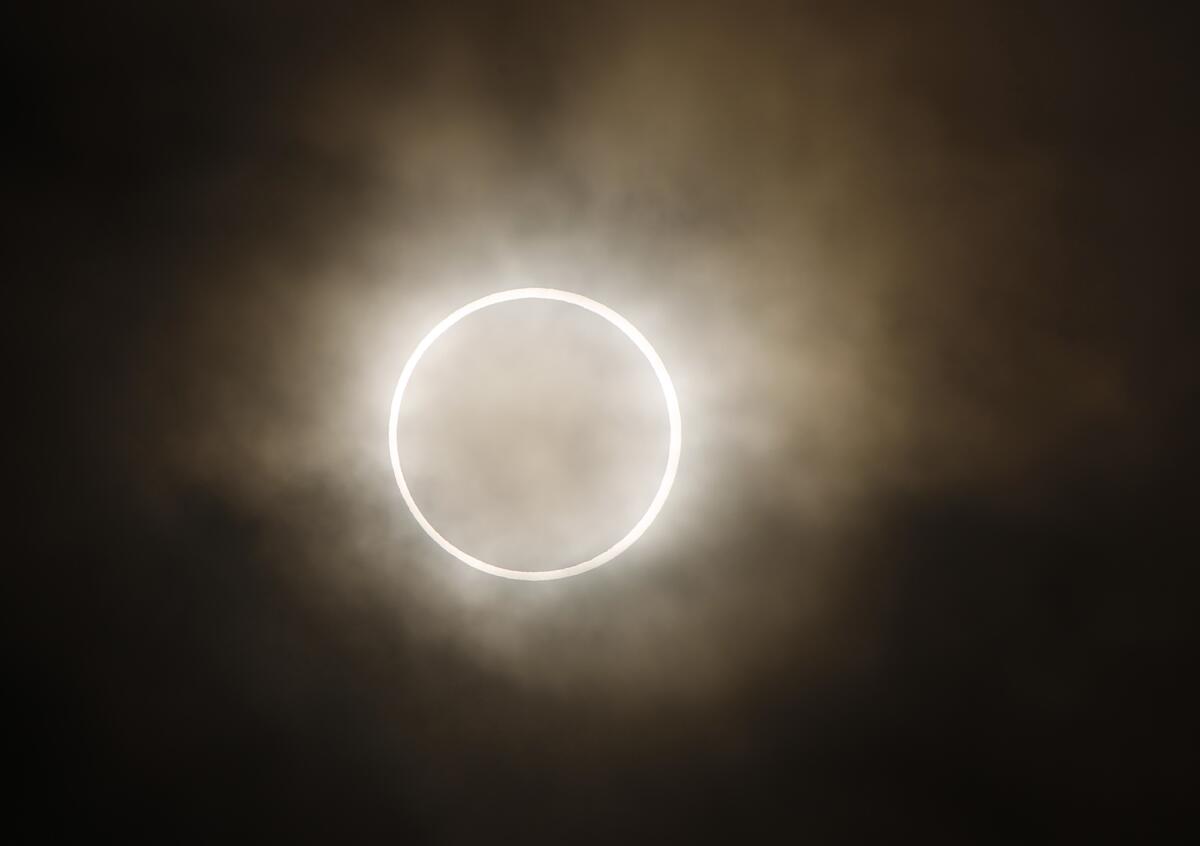
Tens of millions in the Americas will have front-row seats for Saturday’s rare “ring of fire” eclipse of the sun.
What’s called an annular solar eclipse — better known as a ring of fire — will briefly dim the skies over parts of the western U.S. and Central and South America.
As the moon lines up precisely between Earth and the sun, it will blot out all but the sun’s outer rim. A bright, blazing border will appear around the moon for as much as five minutes along a narrow path stretching from Oregon to Brazil.
The celestial showstopper will yield a partial eclipse across the rest of the Western Hemisphere. In Los Angeles, more than three-quarters of the diameter of the sun will be blocked by the moon when the eclipse reaches its peak at 9:24 a.m.
In parts of the Northern Hemisphere, this annular ‘ring of fire’ eclipse will appear as a thin outer ring of the sun’s disk.
The ring of fire eclipse is a prelude to the total solar eclipse that will sweep across Mexico, the eastern half of the U.S. and Canada in six months. Unlike Saturday, when the moon is too far from Earth to completely cover the sun from our perspective, the moon will be at the perfect distance to blot out the entire sun on April 8, 2024.
Here’s what you need to know about the ring of fire eclipse, where you can see it and how to protect your eyes:
What’s the path of the ring of fire eclipse?
The eclipse will carve out a swath about 130 miles wide, starting in the North Pacific and entering the U.S. over Oregon around 8 a.m. PDT Saturday. It will culminate in the ring of fire a little over an hour later.
From Oregon, the eclipse will head across Nevada, Utah, New Mexico and Texas, encompassing slivers of Idaho, California, Arizona and Colorado, before exiting into the Gulf of Mexico at Corpus Christi. It will take less than an hour for the flaming halo to traverse the U.S.
From there, the ring of fire will cross Mexico’s Yucatan Peninsula, Belize, Honduras, Nicaragua, Costa Rica, Panama, Colombia and, finally, Brazil before its grand finale over the Atlantic.
The entire eclipse — from the moment the moon starts to obscure the sun until it’s back to normal — will last 2½ to 3 hours at any given spot. The ring of fire portion lasts from three to five minutes, depending on location.
Where can the eclipse be seen?
In the U.S. alone, more than 6.5 million people live along the so-called path of annularity, where the ring of fire will be visible, and another 68 million live within 200 miles, according to Alex Lockwood, a project scientist at the Space Telescope Science Institute in Baltimore. “So a few hours’ short drive and you can have over 70 million witness this incredible celestial alignment,” she said.
A crescent-shaped partial eclipse will be visible in every U.S. state — although just barely in Hawaii — provided the skies are clear. Canada, Central America and most of South America also will see a partial eclipse.
In Los Angeles, the moon will begin to cover the sun around 8:07 a.m., and the last bit will appear to slide away at 10:50 a.m.
The closer you get the path of annularity, the bigger a bite the moon will appear to take out of the sun.
Can’t see the eclipse in real life? NASA and others will provide a livestream of the event.
How can I protect my eyes during the eclipse?
Be sure to use safe, certified solar eclipse glasses, Lockwood stressed. Sunglasses aren’t enough to prevent eye damage. Proper protection is needed throughout the eclipse, from the initial partial phase to the ring of fire to the final partial phase.
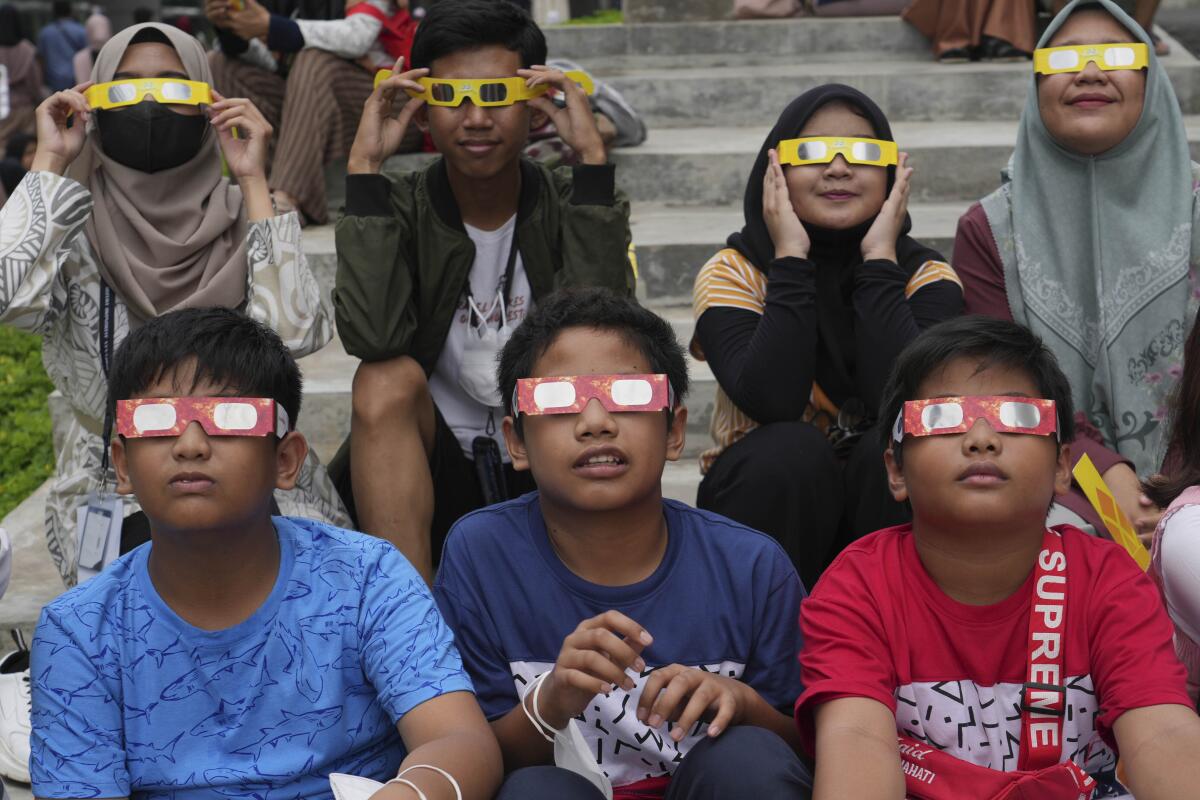
There are other options if you don’t have eclipse glasses. You can look indirectly with a pinhole projector that you can make yourself, including one made with a cereal box.
Cameras — including those on cellphones — binoculars, or telescopes need special solar filters mounted at the front end.
Where will the total eclipse be in 2024?
April’s total solar eclipse will crisscross the U.S. in the opposite direction of Saturday’s event.
It will begin in the Pacific and head up through Mexico into Texas, then pass over Oklahoma, Arkansas, Missouri, Illinois, Indiana, Ohio, the northern fringes of Pennsylvania and New York, and New England, before cutting across Canada into the North Atlantic at New Brunswick and Newfoundland. Almost all these places missed out during the United States’ coast-to-coast total solar eclipse in 2017.
It will be 2039 before another ring of fire is visible in the U.S., and Alaska will be the only state then in the path of totality. And it will be 2046 before another ring of fire crosses into the U.S. Lower 48.
That doesn’t mean they won’t be happening elsewhere: The southernmost tip of South America will get one next October, and Antarctica in 2026.
What will scientists do during the eclipse?
NASA and others plan a slew of observations during both eclipses, with rockets and hundreds of balloons soaring.
“It’s going to be absolutely breathtaking for science,” said NASA astrophysicist Madhulika Guhathakurta.
This fall, NASA is all about asteroids. OSIRIS-REx’s brought samples from Bennu; Psyche will visit a space rock; and the Lucy spacecraft will fly by an asteroid.
Embry-Riddle Aeronautical University’s Aroh Barjatya will help launch three NASA-funded sounding rockets from New Mexico’s White Sands Missile Range before, during and after Saturday’s eclipse. The goal is to see how eclipses set off atmospheric waves in the ionosphere nearly 200 miles up that could disrupt communications.
Barjatya will be just outside Saturday’s ring of fire. And he’ll miss April’s full eclipse, while launching rockets from Virginia’s Wallops Island.
“But the bittersweet moment of not seeing annularity or totality will certainly be made up by the science return,” he said.
